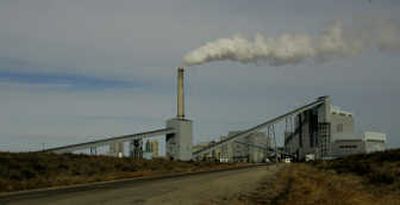Groups putting pressure on coal

WASHINGTON – Every time a new coal-fired power plant is proposed anywhere in the United States, a lawyer from the Sierra Club or an allied environmental group is assigned to stop it, by any bureaucratic or legal means necessary.
They might frame the battle as a matter of zoning or water use, but the larger war is over global warming: Coal puts twice as much temperature-raising carbon dioxide into the atmosphere as natural gas, second to coal as the most common power plant fuel.
The plant-by-plant strategy is part of a campaign by environmentalists to force the federal government to deal with climate change. The fights are scattered from Georgia to Wyoming, from Illinois to Texas, but the ultimate target is Washington, where the Bush administration has resisted placing limits on carbon dioxide and Congress has yet to act on a global warming bill.
The campaign against new coal-powered plants has infuriated utilities, who charge that the environmentalists’ tactics are an abuse of the regulatory and judicial systems. They are counterpunching with ads, lobbying and court briefs of their own, bringing the clash over coal to a pitch that rivals the environmental and legal fights over nuclear power decades ago.
The environmental coalition, which includes the Natural Resources Defense Council, Environmental Defense Fund and Environmental Integrity Project, claims 65 victories over the past three years. The Sierra Club is currently coordinating opposition to about 50 additional power plant proposals.
“We have a national presence, so we’re sort of mission control,” said Pat Gallagher, director of the Sierra Club’s environmental law program.
The goal: “We hope to clog up the system,” said David Bookbinder, the Sierra Club’s chief climate counsel. “It’s putting pressure on Congress to put together a comprehensive plan.”
Utilities and industry groups acknowledge that the efforts have been responsible for stopping some coal plants that otherwise would have been built. But the number is “nowhere near” 65, said Jeff Holmstead, a former EPA official who is now an industry lobbyist.
The partners in the anti-coal crusade are picking fights over any and all generators that use coal “regardless of merit,” said Brendan Collins, a lawyer in Philadelphia who represents utilities and power plant developers. “They are doing it in a way that is unfair.”
Since a meeting in Washington last summer, the partners in the anti-coal crusade have been focusing more squarely on carbon dioxide emissions in their local skirmishes, hoping to create precedents for dealing with a pollutant that is not yet federally regulated.
Their first high-profile victory came in Kansas last October, when state regulators denied a request by Sunflower Electric Co. for an air quality permit for two 700-megawatt generators that would run on coal in the town of Holcomb.
The Sierra Club petitioned the state’s health and environment secretary, Roderick L. Bremby, to deny the air quality permit on grounds of carbon dioxide emissions.
“I believe it would be irresponsible to ignore emerging information about the contribution of carbon dioxide and other greenhouse gases to climate change and the potential harm to our environment and health if we do nothing,” Bremby said at the time.
Since, the state courts and legislature have been haggling over coal and carbon dioxide in Kansas, and Sunflower has been unable to proceed.
Bookbinder is the Sierra Club’s point man against a proposed power plant on tribal land in Utah, a case that shows the scope of the anti-coal operation.
His mission: halt a project by six electric cooperatives that run the Bonanza generator on the Uintah and Ouray Indian reservation. The co-ops, operating as Deseret Power, want to add a new unit with the capacity to manufacture 110 megawatts of electricity, about one-fifth the capacity of the average power plant.
Bookbinder spied a big opportunity in the small project. Because the Bonanza plant is on property held in trust for Indians by the U.S. government, it was the Environmental Protection Agency, not a state, that issued the permit allowing the co-ops to proceed.
Oral arguments are scheduled in late May and a decision is expected near the end of the summer.
If Bookbinder is successful, a ruling would affect any project that comes before the EPA, which has permitting authority for power plants in eight states, all federally-owned land, Puerto Rico, Guam and the Northern Marianas.